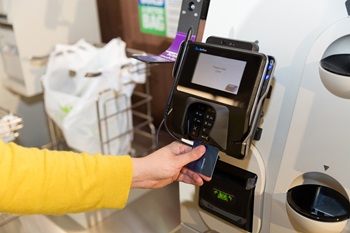By: Hannah Walker, Senior Director, Technology & Nutrition Policy, Food Marketing Institute

FMI member companies spent more than five years and hundreds of millions of dollars to become chip card-compliant before the October 2015 liability shift, and companies continue to dedicate significant resources to become EMV-compliant months after the liability shift. In spite of the investment of time and capital, many grocers did not have chip card-enabled terminals at their point-of-sale at the time of the deadline set by the card networks. Food retailers were faced with the busy 2015 holiday shopping season and the ensuing months exposed to unprecedented counterfeit card liability. FMI has heard incredulous stories from members whose EMV deployment was pushed back time and again by their overwhelmed vendors. While grocers had the hardware in their stores and awaited software certification, they reported unprecedented spikes in chargebacks, some with hundreds of thousands of dollars a week; another hit with an unbelievable week of $1 million in chargebacks.
Until now, we have not been able to fully quantify what the sheer volume and cost of chargebacks totaled over the past year. Recently, Digital Transactions previewed a soon-to-be released report and shared staggering numbers that, unfortunately, were not surprising to those who have been inundated with chargebacks over the past ten months. According to Digital Transactions, U.S. merchants will be hit with $5.8 billion in chargebacks in 2016, a 21 percent jump since 2015. In 2016, U.S. merchants were flooded with $260.3 million individual chargebacks, 17 percent more than in the previous year.
While the one-year anniversary of the EMV liability shift quickly approaches, we can expect the card brands to paint a more positive picture than perhaps actually exists. We can expect them to come out with statistics highlighting the rate of EMV card issuance and the number of retailers now certified. However, it is important for the entire story to be told; the U.S. transition to EMV has been unnecessarily difficult and costly. From the beginning, FMI members tried to engage with the card brands to discuss the operational challenges of the abbreviated timeline the brands unilaterally rolled out a few short years ago. The card networks failed to consider the realities of the U.S. payments system, the sheer number of merchants or the capabilities of their vendors to get them EMV-certified when they set the arbitrary October 2015 liability shift date. This lack of consideration has cost main street retail an astronomical amount of dollars.
While the nightmare of EMV migration and deployment has ended for some grocers, it has not even fully begun for others. For every one of our members that reports they have completed the months-long installation, testing, piloting and final deployment, another will report an additional delay from their vendors.
FMI has compiled best practices for addressing these chargebacks in addition to providing materials from the card networks. Additionally, FMI assures you and your companies that we will continue to tell the real story and champion for a more fair and competitive marketplace, even if the card brands try to paint a more positive picture of EMV migration in the United States. As if the hassle and struggle of chip card shift has not spoken for itself enough, money talks, and $5.8 billion worth of chargebacks should be heard loud and clear.


 Industry Topics address your specific area of expertise with resources, reports, events and more.
Industry Topics address your specific area of expertise with resources, reports, events and more.
 Our Research covers consumer behavior and retail operation benchmarks so you can make informed business decisions.
Our Research covers consumer behavior and retail operation benchmarks so you can make informed business decisions.
 Events and Education including online and in-person help you advance your food retail career.
Events and Education including online and in-person help you advance your food retail career.
 Food Safety training, resources and guidance that help you create a company food safety culture.
Food Safety training, resources and guidance that help you create a company food safety culture.
 Government Affairs work — federal and state — on the latest food industry policy, regulatory and legislative issues.
Government Affairs work — federal and state — on the latest food industry policy, regulatory and legislative issues.
 Get Involved. From industry awards to newsletters and committees, these resources help you take advantage of your membership.
Get Involved. From industry awards to newsletters and committees, these resources help you take advantage of your membership.
 Best practices, guidance documents, infographics, signage and more for the food industry on the COVID-19 pandemic.
Best practices, guidance documents, infographics, signage and more for the food industry on the COVID-19 pandemic.
